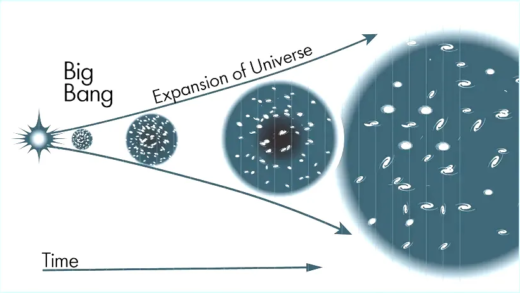Marine mammals are under threat from climate change, pollution, and habitat loss, making conservation efforts crucial for their survival. They play a vital role in ocean ecosystems by regulating populations and contributing to nutrient cycling. Initiatives such as marine protected areas and public awareness campaigns are key to their protection.
Types of Marine Mammals
Marine mammals are a diverse group of animals that inhabit our oceans, showcasing incredible adaptations and unique lifestyles. Among the various types of marine mammals, we find species like whales, dolphins, seals, and manatees. Each of these groups possesses distinct traits and habits that allow them to thrive in marine environments.
- Whales: These giants of the ocean are divided into two main categories: baleen whales, which filter feed on small organisms, and toothed whales, which hunt for larger prey.
- Dolphins: Known for their intelligence and playful behavior, dolphins are social creatures that often travel in pods.
- Seals: These pinnipeds are characterized by their flippers and can be found lounging on rocks or swimming gracefully in the water.
- Manatees: Often called sea cows, manatees are gentle herbivores that graze on underwater vegetation.
Understanding the diversity of marine mammals and their classifications is crucial for appreciating their roles in the ecosystem.
Adaptation of Marine Mammals
Marine mammals have evolved a range of remarkable adaptations that enable them to thrive in salty waters. These adaptations are essential for their survival and can be observed in various aspects of their biology.
- Body Shape: Streamlined bodies reduce drag while swimming, allowing marine mammals to move efficiently through water.
- Blubber: A thick layer of fat beneath the skin provides insulation against cold temperatures and serves as an energy reserve.
- Respiration: Marine mammals have developed specialized lungs that allow them to hold their breath for extended periods while diving.
- Sensory Adaptations: Many species possess enhanced hearing and echolocation abilities, crucial for navigation and hunting in dark waters.
These adaptations highlight the incredible ways marine mammals have evolved to survive in their aquatic environment, showcasing nature’s ingenuity.
Diet of Marine Mammals
The diet of marine mammals varies widely among species, reflecting their unique ecological niches. Understanding what these animals eat provides insight into their roles in marine ecosystems.
- Whales: Depending on the species, whales may consume small fish, krill, or larger prey, utilizing different feeding techniques.
- Dolphins: These clever hunters often use cooperative strategies to catch fish, employing techniques like herding.
- Seals: Seals primarily feed on fish and squid, using their agility to catch prey in the water.
- Manatees: As herbivores, manatees primarily graze on seagrasses and other aquatic plants.
By understanding the feeding habits and dietary needs of marine mammals, we can better appreciate their contributions to marine food webs and ecosystem health.
Communication in Whales and Dolphins
Marine mammals like whales and dolphins are known for their sophisticated communication methods. These creatures have developed a range of vocalizations, body language, and even echolocation to interact with one another.
- Vocalizations: Whales produce complex songs that can travel long distances underwater, allowing them to communicate across vast ocean expanses. Each species has its own unique sounds, which serve different purposes, from attracting mates to warning others of danger.
- Clicks and Whistles: Dolphins use clicks and whistles as a form of sonar and social interaction. Their clicks can help them navigate and find food, while whistles allow them to identify each other and maintain social bonds.
- Body Language: Many marine mammals also rely on body movements to convey messages. For instance, a dolphin may leap out of the water to signal excitement or to communicate with its pod.
Understanding these communication methods is crucial for appreciating how marine mammals interact within their communities. Their ability to convey information plays a significant role in their survival and social structures.
Interesting Facts About Marine Mammals
Marine mammals are full of surprises! Here are some jaw-dropping facts that showcase the incredible diversity and uniqueness of these creatures:
- Whales are the largest animals on Earth: The blue whale, for example, can grow up to 100 feet long and weigh as much as 200 tons!
- Dolphins have been known to use tools: Some dolphins cover their snouts with sponges to protect themselves while foraging on the ocean floor.
- Manatees are surprisingly fast: Despite their gentle appearance, manatees can swim up to 20 miles per hour in short bursts.
- Seals can hold their breath for a long time: Some species can dive for over an hour without coming up for air!
These fascinating traits highlight just how remarkable marine mammals are and the important roles they play in our oceans.
Reproduction of Marine Mammals
The reproduction of marine mammals is as diverse as the species themselves. Each type has its own unique mating rituals and parenting styles:
- Mating Rituals: Many marine mammals engage in elaborate courtship displays. For example, male humpback whales often perform acrobatic jumps and sing to attract females.
- Gestation Periods: The gestation period varies significantly among species. For instance, orcas have a gestation period of about 17 months, while dolphins typically carry their young for around 12 months.
- Parental Care: Marine mammals exhibit strong parental instincts. Mothers often nurse their young for extended periods, providing them with essential nutrients and protection as they learn to navigate their environment.
Understanding these reproductive behaviors is vital for conservation efforts, as it sheds light on how best to protect these magnificent creatures and their habitats.
Threats to Marine Mammals
Marine mammals face numerous threats that jeopardize their survival and the health of marine ecosystems. These challenges arise from both natural and human-induced factors. Understanding these threats is crucial for effective conservation efforts.
- Climate Change: Rising ocean temperatures and changing sea ice patterns disrupt the habitats of marine mammals, affecting their feeding and breeding grounds.
- Pollution: Chemicals, plastics, and other pollutants can accumulate in marine mammals, leading to health issues and declining populations.
- Commercial Fishing: Entanglement in fishing gear poses a significant risk, as does competition for food resources due to overfishing.
- Shipping Traffic: Increased maritime traffic leads to ship strikes and noise pollution, which can interfere with communication and navigation among marine mammals.
- Habitat Loss: Coastal development and habitat destruction further threaten the natural environments that marine mammals rely on.
Awareness of these threats is vital for driving conservation measures and protecting marine mammals from extinction.
Role of Marine Mammals in Ocean Ecosystem
Marine mammals play a critical role in maintaining the health and balance of ocean ecosystems. Their presence and activities contribute significantly to various ecological processes.
- Predators and Prey: Marine mammals are both predators and prey within the food web, helping to regulate fish populations and maintain ecological balance.
- Nutrient Cycling: Through their feeding and excretion, marine mammals contribute nutrients to the ocean, promoting the growth of phytoplankton, which forms the base of the marine food web.
- Habitat Formation: Species like sea otters help maintain kelp forests, which provide habitat for numerous marine organisms, illustrating the interconnectedness of marine life.
- Indicators of Ocean Health: As sensitive species, marine mammals serve as indicators of the overall health of marine ecosystems, alerting us to environmental changes and issues.
Recognizing the ecological importance of marine mammals underscores the need for their conservation and protection.
Conservation Efforts for Marine Mammals
Efforts to conserve marine mammals are crucial for ensuring their survival and the health of our oceans. Various initiatives are in place to protect these incredible animals and their habitats.
- Protected Areas: Establishing marine protected areas (MPAs) helps safeguard critical habitats from harmful activities like fishing and pollution.
- Regulation of Fishing Practices: Implementing sustainable fishing practices and reducing bycatch are essential steps in protecting marine mammal populations.
- Research and Monitoring: Ongoing research and monitoring programs provide valuable data on marine mammal populations and their habitats, informing conservation strategies.
- Public Awareness Campaigns: Educating the public about the threats marine mammals face and how to help can foster support for conservation efforts.
- International Cooperation: Collaboration among countries and organizations is vital for addressing global challenges like climate change and pollution that affect marine mammals.
Participating in conservation efforts, whether through advocacy or responsible consumer choices, can make a difference in the survival of marine mammals.





Comments are closed.